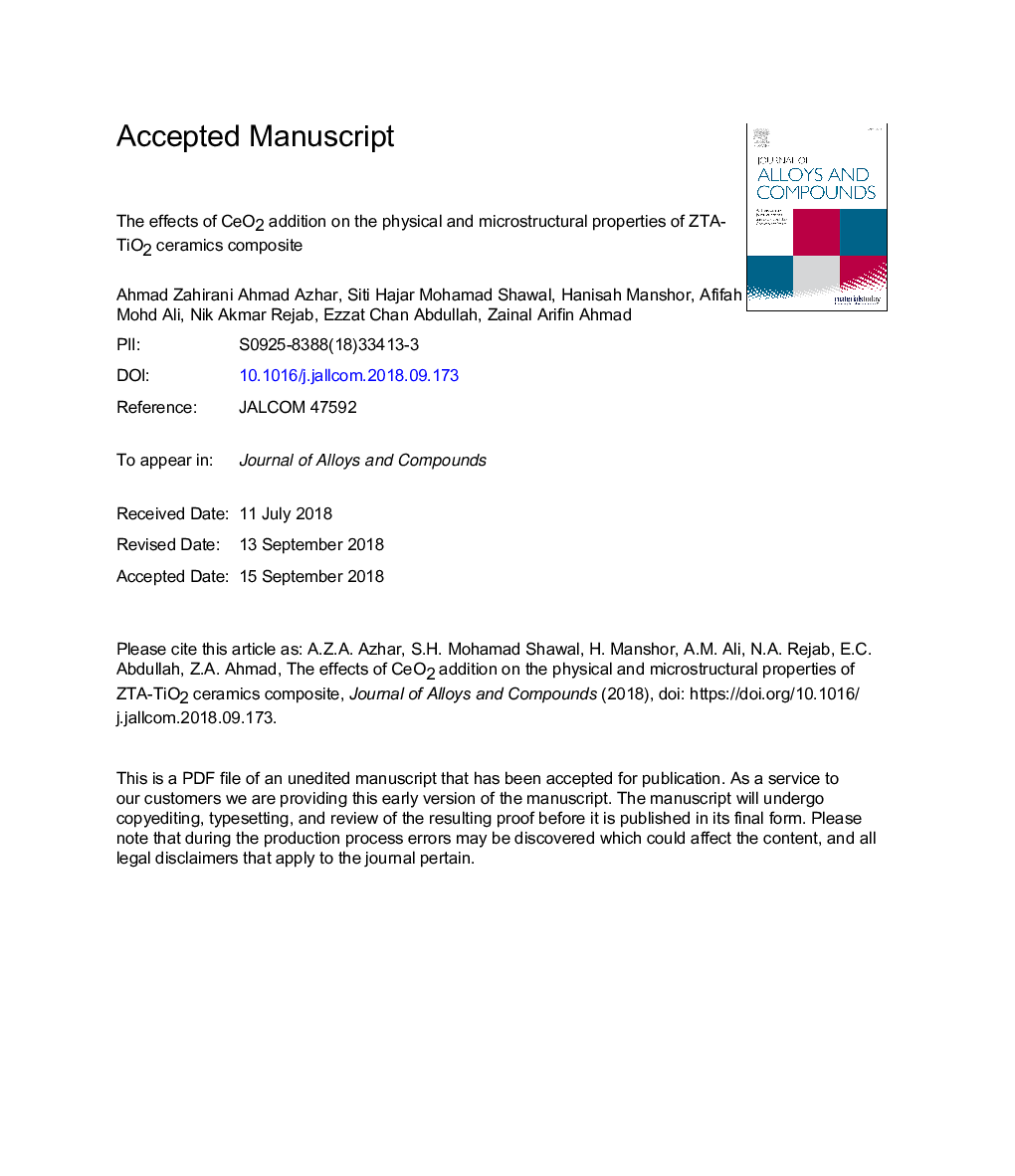| Article ID | Journal | Published Year | Pages | File Type |
|---|---|---|---|---|
| 11019908 | Journal of Alloys and Compounds | 2019 | 28 Pages |
Abstract
The effect of CeO2 addition ranging from 0â¯wt. % to 7â¯wt. % on phase, microstructural evolution, physical and mechanical properties of ZTA-3 wt. % TiO2 ceramic composite were investigated. The samples were prepared by solid-state mixing and sintered at 1600â¯Â°C for 1hr under pressureless condition. Samples were then characterized by XRD, SEM, densitometer and Vickers indentation method. Based on XRD analysis, m-ZrO2 began to diminish at 1â¯wt.% CeO2 while secondary phases, i.e. Ce0.7Zr0.3O2and Zr0.4Ti0.6O2 initiated at 3â¯wt.% CeO2 addition. SEM images showed finer grain sizes was produced upon increasing amount of CeO2 up to 5â¯wt.%, corresponding to higher average grain intercept (AGI) values. From the results obtained, the optimum amount of CeO2 addition was at 5â¯wt. % which yielded the highest bulk density (4.41â¯g/cm3), firing shrinkage (21.94%), hardness (1580.10HV) and fracture toughness (9.77â¯MPaâ¯m1/2). This is contributed by the grain refinement and the highest amount of secondary phases formed, especially Zr0.4Ti0.6O2. However, with an excessive addition of CeO2, i.e more than 5â¯wt.%, grain sizes enlarged and the amount of secondary phases reduced, which degraded the mechanical properties of ZTA-3 wt. % TiO2.
Related Topics
Physical Sciences and Engineering
Materials Science
Metals and Alloys
Authors
Ahmad Zahirani Ahmad Azhar, Siti Hajar Mohamad Shawal, Hanisah Manshor, Afifah Mohd Ali, Nik Akmar Rejab, Ezzat Chan Abdullah, Zainal Arifin Ahmad,
